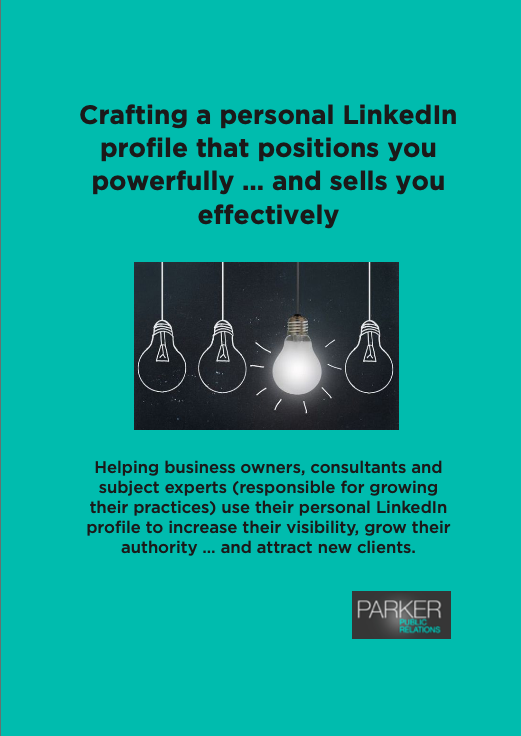
Surely, you’d be better off beavering away in your laboratory, hunched over your computer, heading off on another field trip or pressing ahead with that thesis?
Fraid not!
The world has changed and so have the expectations of modern-day researchers and scientists.
Now that you’re increasingly expected to demonstrate the ‘impact’ of your research beyond academia, comes the pressing need to communicate and engage with those critical to the future success of your work … as well as those likely to benefit from the big outcomes of your work.
Here I’m talking about potential industry partners, fellow collaborators, funding decision-makers, the public (aka the taxpayer) and research end-users.
And what better way of managing the process than building your personal brand and actively promoting your research.
That’s all very well I hear you say, but where on earth do I start and what’s involved?
Step 1 – Self-reflect on what it is you have to offer.
Given that your personal brand as a researcher or scientist is the unique mix of your work, your expertise, passion and personality, get laser sharp on what these are.
What issues or problems are you investigating and what are you hoping to achieve? Are you looking to find a cure, change attitudes or beliefs, improve processes and decision-making, help the environment or contribute to policy making and amending legislation.
Also, what is it that makes your research unique and why are YOU well placed to do this research?
Also who are you as a person? What are passionate about or prepared to take a stand on and what is it that you do beyond the confines of your workplace or laboratory?
Ideally your brand as a researcher or scientist should present you as someone with deep knowledge, who is doing valuable work, who is easy to get along with … and well worth reaching out to or keeping an eye on!
Step 2 – Tell your story to humanise your brand.
Let people know why you are doing what you’re doing. What was the catalyst for becoming a researcher or scientist? What is it that galvanised you into action?
Telling your story will help people relate more readily to you and will help create a powerful bond between you and your audience.
Your story can be used on your personal website (should you decide to have one), on your social media profiles and in the content you create.
It also provides a wonderful starting point for taking your stakeholders with you on your journey as a researcher and scientist … and to ensure they stay along for the duration of the ride.
Step 3 – Figure out who your ideal audience is.
Who do you need to engage and communicate with?
Depending on where you are in your research, your key audiences would most likely be a mix of researchers doing similar work, potential or existing industry partners and collaborators and the big beneficiaries of your research.
Your audience could also include key source of funding; specifically alternative funding sources such as trusts, foundations, charities, individual donors or businesses supporting research.
Once you know who your ideal audience is, get crystal clear on precisely who they are. Who are the decision makers and those likely to influence the decision makers? What industry, organisations or institutions do they work for? Where are they located geographically and what job titles or roles do they hold?
Once you know who they are, actively reach out to them on social media.
Step 4 – Determine your tactics and communications channels.
Typically, these would include publicity, social media, blogs, public speaking, podcasts, videos, white papers, webinars, business books, and so on.
However, your choice of tactic is typically determined by what your target audience is consuming and where they ‘hang’ out.
If you are looking to build visibility with stakeholders beyond academia, your logical choice would be mainstream media, industry conferences and events and social media platforms like LinkedIn and Twitter.
However, if you’re also looking to engage with fellow researchers, ensure you include academic conferences and academic social media platforms (such as ResearchGate, Google Scholar) in the mix.
A word of caution: Don’t attempt to be everything, everywhere, all at once.
At the outset, settle on one, maybe two social media platforms and do them well.
Later, as your confidence grows consider adding other channels or tactics such as publicity or public speaking to the mix.
Step 5 – Get clear on your content.
What should you talk and write about? What kinds of stories should you be telling on social media and elsewhere?
Given that you are looking demonstrate impact, a significant proportion of your effort should go into explaining and promoting your research and taking your audience on a narrative journey with you – talking about your challenges, key obstacles and big milestones.
However, as you progress as an academic and build your body of research or become an entrepreneur or consultant, your content will likely be less about your immediate research but more about what you are best known for, or issues related to your business or consultancy.
Alternatively, you may wish to use your growing influence to take a powerful stand on an issue that is important to you such as advocating for women in STEM or placing limits on the development of AI.
This advocacy would subsequently make up a significant proportion of your content.
Step 6 – Find additional mechanisms to bolster your online presence.
In addition to getting active on social media, generating blogs or securing media coverage another mechanism for building your brand and strengthening your online presence is ensuring you have a bio on your university, department, school or research group websites.
Equally, if you belong to a professional association such as the Institute of Electrical and Electronics Engineers or PassivHaus or a learned academy such as the Australian Academy of the Humanities or the Australian Academy of Technology and Engineering, make sure you have a presence on their websites and that this presence positively showcases you and your valuable research.
So hopefully the next time someone Googles your name, you will pop up – not once – but multiple times and that what is said positions you powerfully as a problem solver, a deep expert and someone whose research is poised to make a positive and meaningful contribution beyond academia.
Need help to develop your brand as a researcher or scientist?
Parker Public Relations provides personal branding and thought leadership coaching and group workshops for researchers, scientists and academics.
To get in touch: 0422694503 or wendy@parkerpublicrelations.com.au

